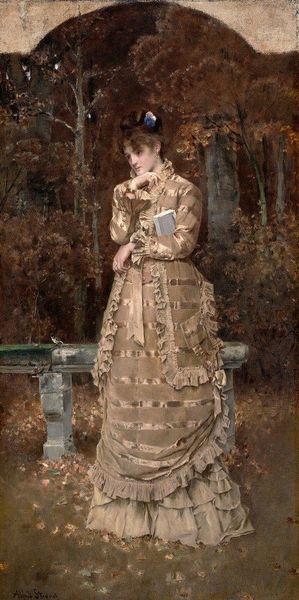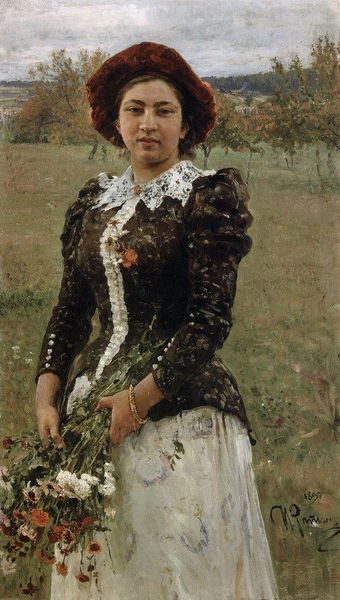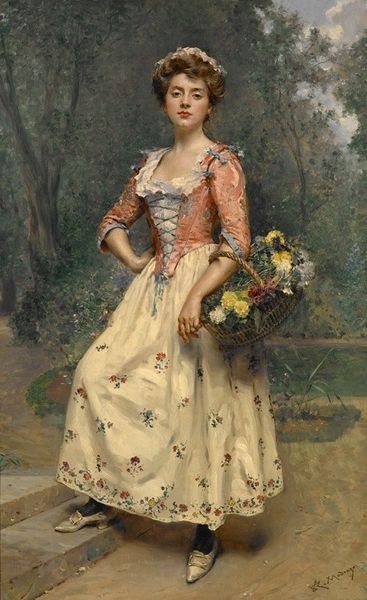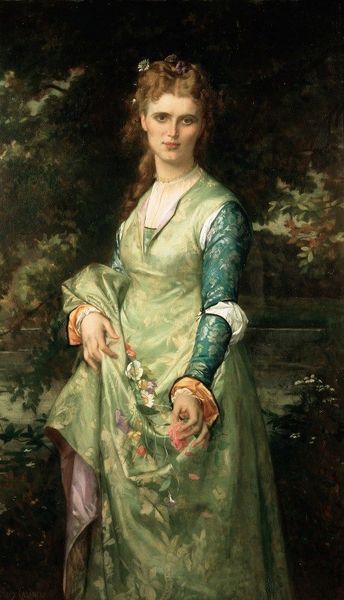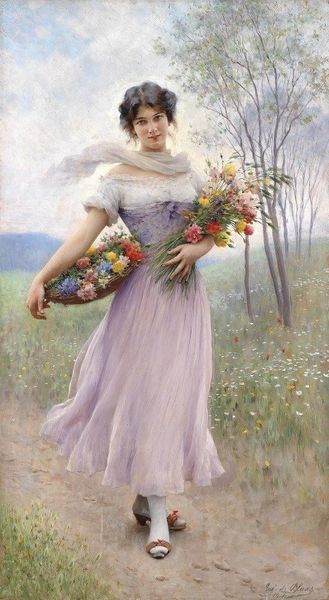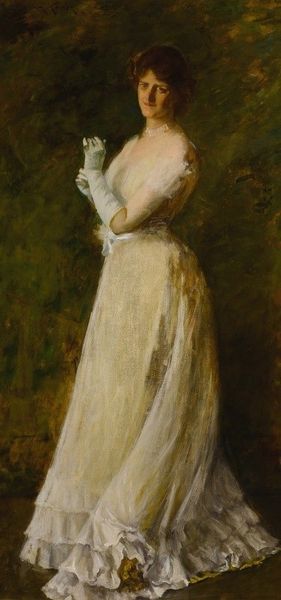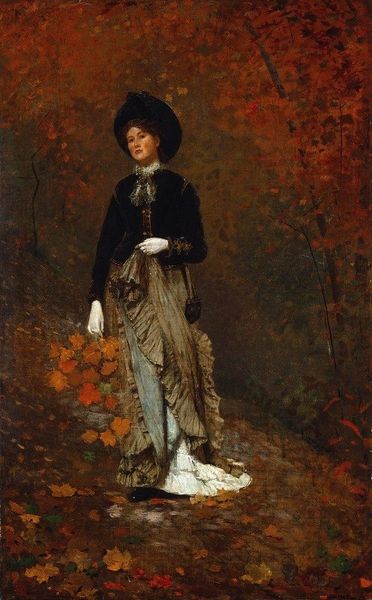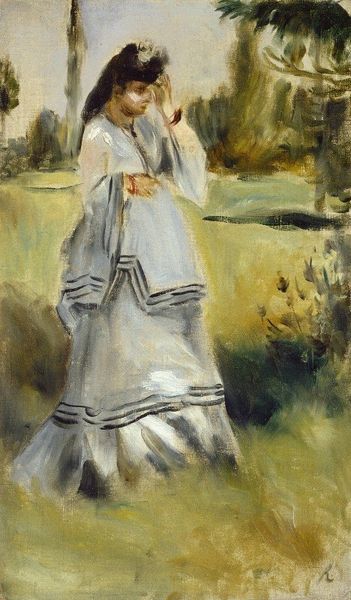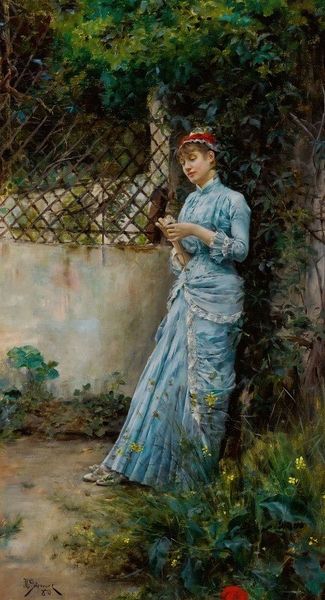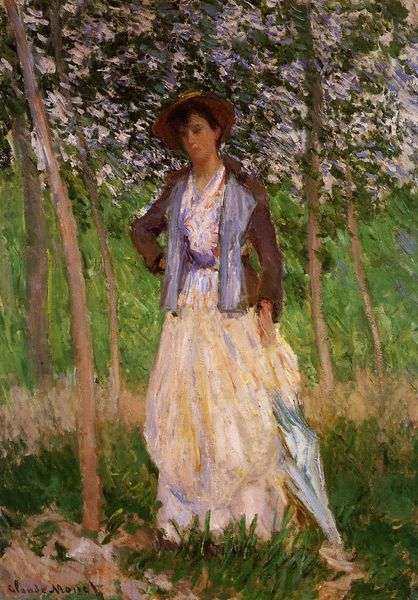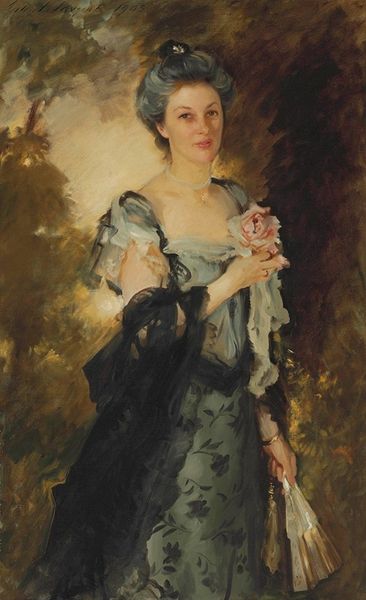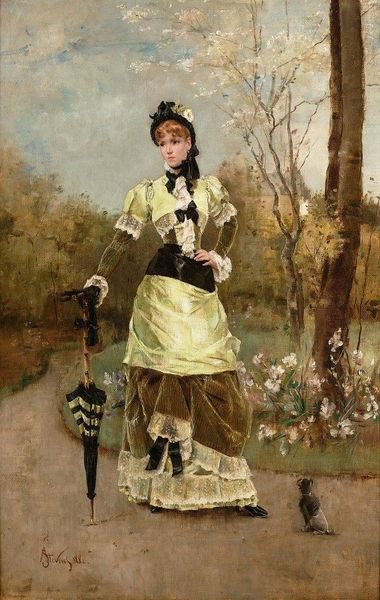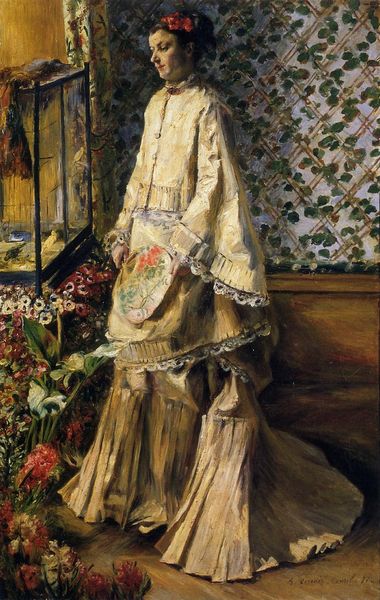
Copyright: Public Domain: Artvee
Editor: We’re looking at "Spring," an 1877 oil painting by Alfred Stevens. It features a woman in a stunning blue dress in a blossoming landscape, and a dove is perched on her shoulder! The delicate details of the dress, all those frills and ribbons, against the soft background give it such a dreamy quality. What immediately jumps out at you about this piece? Curator: Immediately, the interplay between the textural complexity of the dress and the comparative simplicity of the verdant landscape commands attention. Note the strategic use of line in delineating the dress's contours, contrasting with the softer, more diffuse lines of the foliage. Editor: So, the lines and textures are more important than, say, the subject matter? Curator: The subject serves, undoubtedly, as the compositional nucleus, but the formal arrangement of elements and their intrinsic properties constitute the work's aesthetic merit. Consider the chromatic relations; the dress’s azure hue is elegantly juxtaposed against the surrounding greens and floral whites. Editor: That's interesting! I was so focused on the dove as a symbol of peace, but you're right; the *color* really draws the eye. Does the verticality of the composition add something? Curator: Indeed. The verticality of the canvas, reinforced by the standing figure and the flanking trees, emphasizes a certain stateliness, contributing to the overall sense of composed elegance. Do you discern how Stevens guides your gaze through strategic compositional structuring? Editor: Now that you mention it, the eye does travel upwards. It's almost like he's building a visual ladder. I initially saw it as just a pretty picture, but I am more interested in composition now! Curator: Precisely. It is in analyzing these formal relationships that the artwork reveals its deeper aesthetic underpinnings, moving beyond mere representational accuracy.
Comments
No comments
Be the first to comment and join the conversation on the ultimate creative platform.
